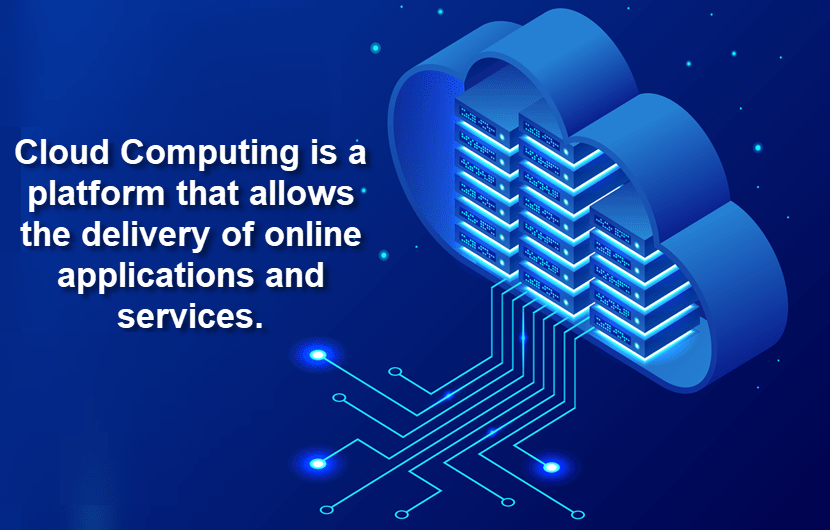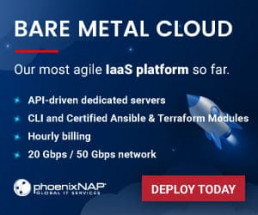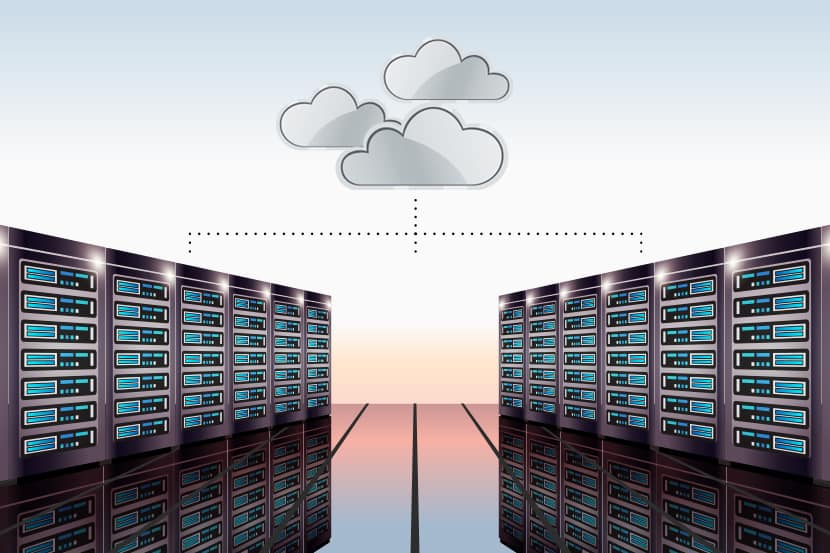Much has changed since organizations valued on-premise infrastructure as the best option for their applications. Nowadays, most companies are moving towards off-premise possibilities such as cloud and colocation.
Forrester Inc. reports that Global spending on Cloud services has exponentially increased from $17 billion in 2009 to $208 billion in 2019, growing at an increasing rate, especially in the last five years.
Before a company decides to switch to cloud computing technology, they need to understand both options’ pros and cons.
To decide which solution is best for your business, make sure you understand what on-premise and cloud computing are and how they work.
What is On-Premise Hosting?
On-premise is the traditional approach in which all the required software and infrastructure for a given application reside in-house. On a larger scale, this could mean the business hosts its own data center on-site.
Running applications on-site includes buying and maintaining in-house servers and infrastructure. Apart from physical space, this solution demands a dedicated IT staff qualified to maintain and monitor servers and their security.
What is Cloud Computing?
Cloud computing is an umbrella term that refers to computing services via the internet. By definition, it is a platform that allows the delivery of applications and services. These services include computing, storage, database, monitoring, security, networking, analytics, and other related operations.
The key characteristic of cloud computing is that you pay for what you use. The cloud service provider also takes care of maintaining its network architecture, giving you the freedom to focus on your application.
Most cloud providers offer much better infrastructure and services than what organizations set up individually. Renting rack space in a data center costs only a fraction of what it would to set up and maintain the in-house infrastructure at such a scale. Also, there are considerable savings on technical staff, upgrades, and licenses.
On-Premise vs. Cloud Comparison
There is no clear winner between on-premise vs. cloud computing solutions that cover all business purposes.
Both on-site and Cloud deal with performance, cost, security, compliance, backups, and disaster recovery differently.
| On-Premise Hosting | Cloud Hosting | |
| Cost | Higher | Lower |
| Technical Involvement | Extremely high | Low |
| Scalability | Minimal options | Vertical and horizontal scalability |
| Security and Compliance | On-premise hosting security depends entirely on the staff that maintains it | The Cloud provider ensures a secure environment. Cheaper options on the market provide less security than on-premise infrastructure |
| Control | Full control and infinite customization options | A hypervisor layer between the infrastructure and the hardware. No direct access to hardware |
A closer look at the major factors will help you decide which one is best for you.
1. Cost
The core difference between on-premise vs. cloud computing is also the very reason for their contrasting pricing models.
With on-premise, the client uses in-house dedicated servers. Therefore, obtaining them requires a considerable upfront investment that includes buying servers, licensing software, and hiring a maintenance team. Additionally, in-house infrastructure is not as flexible when it comes to scaling resources. Not using the full potential of the setup results in unwanted operating costs.
Cloud computing has little to no upfront costs. The infrastructure belongs to the provider, while the client only pays for using the devices on a monthly or annual basis. This is known as the pay-as-you-go model where you only pay for the units you consume and only for the time used. Cloud computing also doesn’t require the cost of investing in a technical team. If not agreed upon otherwise, the provider takes care of maintenance.
Verdict: When it comes to pricing, cloud computing has the upper edge. Not only does it have a pay-as-you-go model with no upfront investment, but it is easy to predict costs over time. On the other hand, in-house hosting is cost-effective when an organization already has servers and a dedicated IT team.
2. Technical Involvement
Another critical factor that affects an organization’s decision is the amount of technical involvement required.
On-premise involves on-location physical resources, as well as on-location staff that is responsible for that infrastructure. It requires full technical involvement in configuring and maintaining servers by a team of experts. Employing people devoted to ensuring your infrastructure is secure and efficient is very costly.
Cloud solutions are usually fully managed by the provider. They require minimum technical expertise from the client. However, service providers allow a certain amount of flexibility in this regard. Outsourcing maintenance allows you to focus on other business aspects. Still, not all companies are willing to hand over their infrastructure and data.
Verdict: Cloud offers a convenient solution for organizations. Especially if an organization doesn't have the staff or expertise to manage their infrastructure.
However, organizations often opt for an on-premise solution because they need full control due to security requirements, continuity, and geographic requirements.
3. Scalability
Modern applications are continually evolving due to ever-increasing demand and user requirements. Infrastructure has to be flexible and scalable so that the user experience does not suffer.
On-premise offers little flexibility in this respect because physical servers are in use. If you run your operations on-site, resource scaling requires buying and deploying new servers. There are just a few cases where scaling is possible. A few involve controlling the number of active processors per server, increasing memory, and increasing bandwidth.
Cloud Computing offers superior scalability options. These include resizing server resources, bandwidth, and internet usage. For cost-saving purposes, Cloud servers are scaled down or shut down when usage is low. This flexibility is possible due to the servers’ virtual location and resources, which are increased or decreased conveniently. Cloud resources are administered through an admin panel or API.
Verdict: Cloud computing is a good option for small and medium businesses that need little computing resources to start with and hope to scale their infrastructure in time.
4. Cloud vs On-Premise Security and Compliance
Compliance and security are the most critical aspects of both on-premise and cloud computing. It is the most significant barrier to the adoption of these services. Current providers have made many innovations in securing their platforms across both on-premise and Cloud.
For example, the introduction of Private Cloud was a significant step towards achieving greater security in the Cloud.
To learn more about Private Cloud, see our article on Public vs Private Cloud solutions.
Owners of in-house infrastructure manage all the security by themselves. They are responsible for the policies they adopt and the type of security they implement. Therefore, the level of security depends on the knowledge of the staff that manages the servers. Furthermore, there is less chance of losing data.
Security becomes more critical with Cloud computing workloads. Client applications and data can spread across many servers or even data centers. The provider ensures Cloud security, including physical security. Providers should provide security measures like biometric access control, strict visiting policies, screening clients, and CCTV monitoring. These add another layer of protection in case of a physical attack.
Certain countries and industries require data storage within a particular geographic region. Others require a dedicated server that is owned by the client and not shared with other organizations. In such cases, it becomes easier to manage with on-premise.
It is crucial to ensure that the security protocols that are in place by the provider satisfy your needs. That may include HIPAA compliance or PCI compliant hosting.
Verdict: Security experts give on-premise the upper hand. However, there are also benefits to Cloud computing. The provider takes care of the security of both hardware and software. They also possess security certifications that are difficult for individual organizations to obtain.
5. Control
Another deciding factor is considering how much control do you need to have in setting up the system.
On-premises allows control over all aspects of the build – what kind of servers you want to use, software installations, and how to set up the architecture. It requires more time to set up as you have to consider all aspects of the build.
In contrast, with Cloud computing, there is less control of the underlying infrastructure. Consequently, implementation is much faster and more straightforward as the infrastructure is delivered pre-configured.
Verdict: On-premise offers more control but takes more time to set up, while cloud computing is easier and faster to implement.
Making the Decision
This article considered the critical factors of on-premise versus cloud solutions. Each organization must look into its architecture and make application-specific decisions, giving each application individual assessments.
To sum up, the benefits for the adoption of off-premise infrastructures include:
- Improved security with many fail-safes and guarantees
- Compliance with regulatory policies
- Cost-savings due to economies of scale
- Reduction of overhead costs
- Better performance through geo-location optimization
- Higher availability
The decision to colocate can, later on, develop into a full cloud migration where Cloud computing is implemented for scaling and rapid expansion. The reverse is also possible. Organizations using Cloud services can decide to migrate to dedicated servers at a secure data center.
To get help with your decision-making process, contact one of our experts today.





